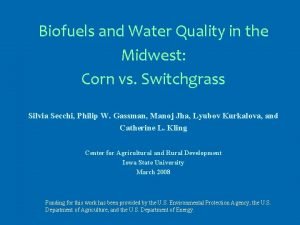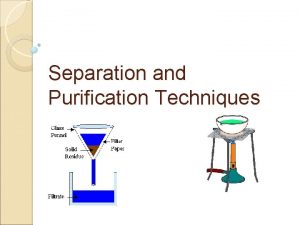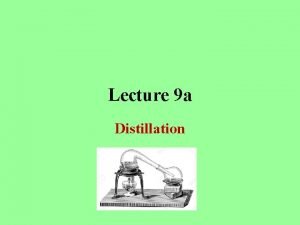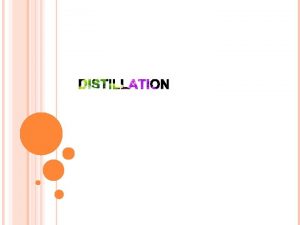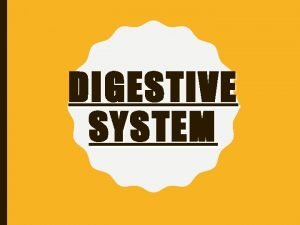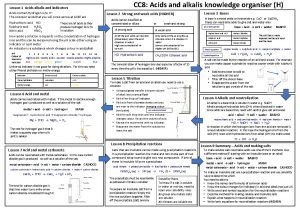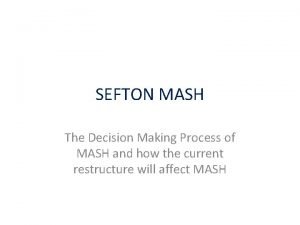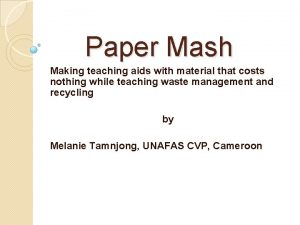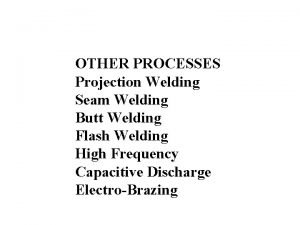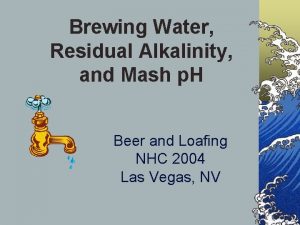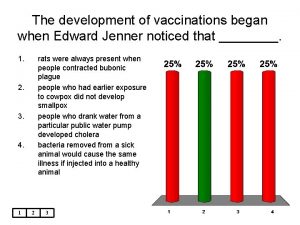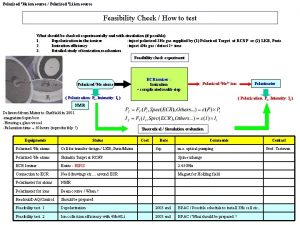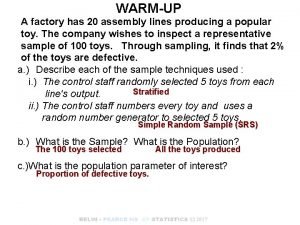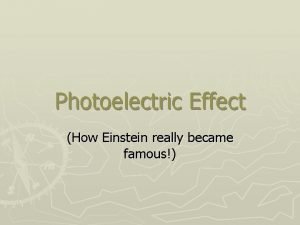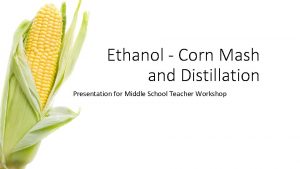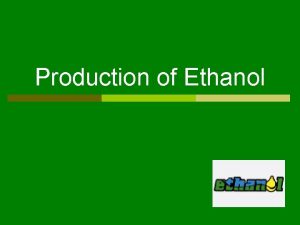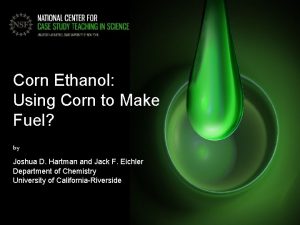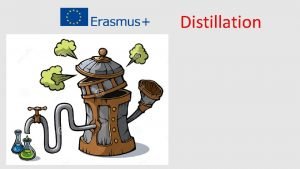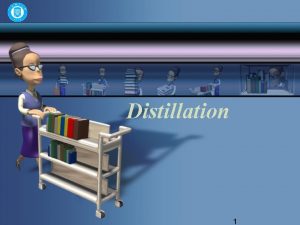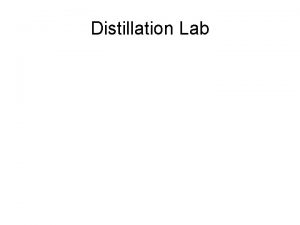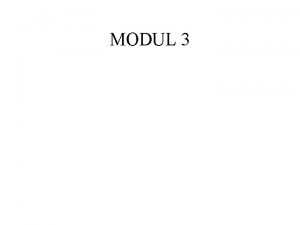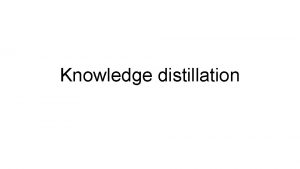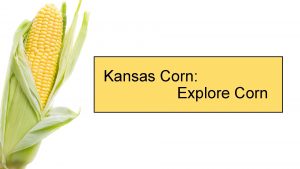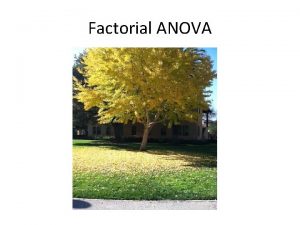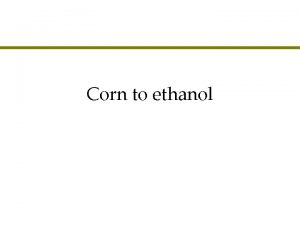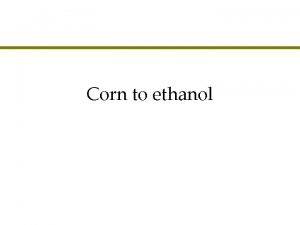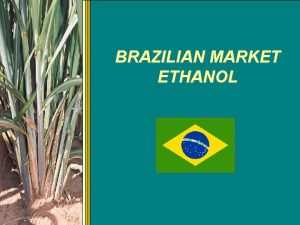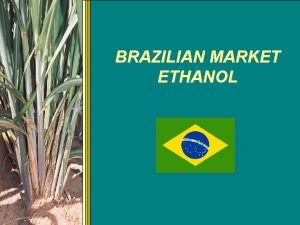Corn Mash and Distillation Producing Fuel Ethanol Ethanol



























- Slides: 27

Corn Mash and Distillation Producing Fuel

Ethanol • Ethanol is a renewable source of fuel for vehicles that is widely produced from corn. Ethanol production is reliant on the anaerobic fermentation of corn sugars by yeast. Glucose Ethanol Carbon dioxide 2 ATP C 6 H 12 O 6 → 2 C 2 H 5 OH + 2 CO 2 + Energy

Ethanol • Scientists and industry professionals are constantly working to make the fermentation procedure more efficient. Different enzymes are added to the corn in order to break the starch into simple sugars that the yeast can process into ethanol.

Ethanol • This lab is designed to allow students to test their procedures they developed in fermenting fuel to produce and distill ethanol.

Preparing samples Materials needed: 250 ml Erlenmeyer Flask 50. 0 g ground corn 50 ml of distilled water Stirring rod

Preparing samples Add 50 g ground corn Add 50 ml distilled water Stir

Boiling Samples • Boiling breaks down the cellulose in the corn • Materials Needed Hot Plate • 1000 ml Beaker (or larger) • Water • Bring 400 -500 ml of water to boiling on a hot plate

Boiling Samples Add sample to the boiling water and allow to boil for 10 minutes (Heating time could be a variable for students to test)

• Allow sample to cool before adding enzymes. • After cooling, students should add the enzymes, buffer solution and yeast they have written in their procedures. • Distilled Water may be added to thin the mixture. • Stir again

• Close flask with stopper

Gas Collection • Fill Pan half full of water • Completely Fill 1000 ml Graduated cylinder • Cover with glass square • Invert into pan

Gas Collection • Position tubing inside the inverted graduated cylinder to capture any carbon dioxide released. • Let the mash ferment overnight.

Day 2 • Record the amount of CO 2 collected. • The amount of gas will be used to estimate the amount of ethanol produced.

Preparing Mash for Distillation • Line a strainer with several layers of cheesecloth and place over a bowl. • Pour fermented mash into cheesecloth and separate as much liquid as possible. Save the mash for nutrient testing lab

Distillation • Separation of components of a mixture using their different boiling points. • Fermentation produces a mixture of ethanol and water, usually no more than 20% ethanol. • We need to purify the ethanol which boils at 78. 4 o. C. • Heating the mixture to this temperature will cause the ethanol to boil while the water is not. • Condensing the vapor produced will result in a sample that is much higher concentration of ethanol.

Distillation Set Up Condenser Distillation Flask Heating Mantle Receiving Flask (Distillate)

Distillation Set Up Condenser Distillation Flask Heating Mantle Receiving Flask (Distillate)





3. 5 L 9. 11

Using Density to Determine Ethanol Percentage 15. 45 ml 35. 20 g 8. 95 ml 43. 25 g 8. 05 g 0. 899 g/ml 8. 05 g= 0. 899 g/ml 8. 95 ml

57 %

Using Density to determine Ethanol Percentage 15. 45 ml 35. 20 g 8. 95 ml 43. 25 g 8. 05 g 0. 899 g/ml 57 % 8. 81 ml 15. 45 ml x 0. 57 8. 81 ml

Flame Test • If the percentage is above 30% it should sustain a flame • Add 2 -3 ml of distillate to a watch glass • Remove distillate and any other flammable materials from area • Use a lighter to light the distillate

Budget This lab is made possible with the support and content contributions of the Kansas Corn Commission.
 Switchgrass vs corn ethanol
Switchgrass vs corn ethanol Simple distillation boiling point difference
Simple distillation boiling point difference Bu vle
Bu vle Distillation introduction
Distillation introduction Applications of distillation
Applications of distillation Tears crushes and mashes food
Tears crushes and mashes food Large intestine function in digestive system
Large intestine function in digestive system Mash, grind, mix and tear food.
Mash, grind, mix and tear food. Mash safeguarding hub
Mash safeguarding hub Mash seam welding
Mash seam welding Mash distance
Mash distance Mash basho cashoco
Mash basho cashoco Sefton mash
Sefton mash Mash lauter tun design
Mash lauter tun design Pan london safeguarding
Pan london safeguarding Sacch rest vs mash out
Sacch rest vs mash out Material mash
Material mash Butt seam welding
Butt seam welding Purple mash
Purple mash Kevin mash
Kevin mash Mash filmweb
Mash filmweb What is residual alkalinity
What is residual alkalinity A vaccination for smallpox was developed in 1796 by ____
A vaccination for smallpox was developed in 1796 by ____ An ion source is producing 6li ions
An ion source is producing 6li ions Non researchable questions examples
Non researchable questions examples A factory has 20 assembly lines producing
A factory has 20 assembly lines producing Kumar is producing the photoelectric effect by using
Kumar is producing the photoelectric effect by using Process specification example
Process specification example
